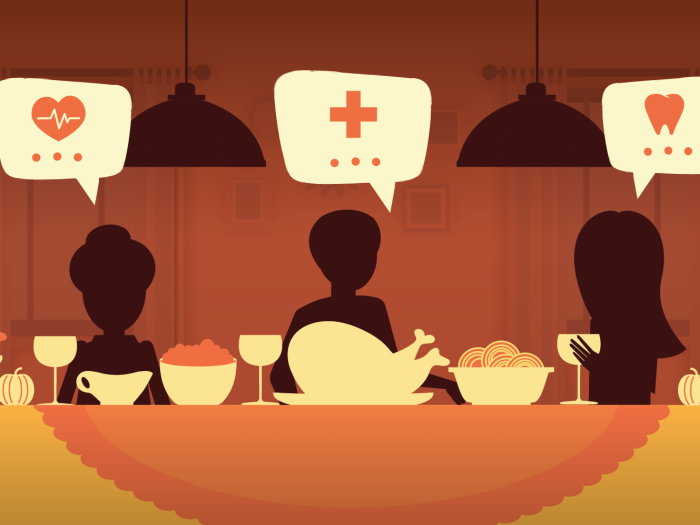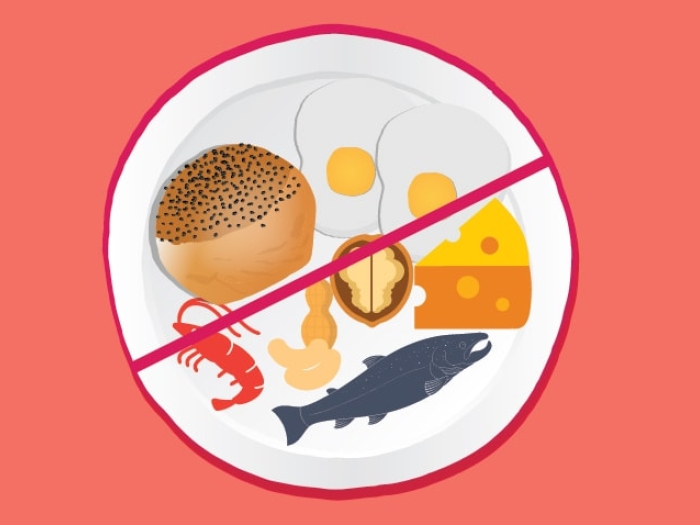Many parents struggling with picky young eaters try different tactics to get their kids to eat healthy but should make sure they’re the right ones, experts say
11:00 AM
Author |

While most parents of preschool and elementary aged children strive to give their children a balanced, nutritional diet, some of their strategies to promote healthy eating may backfire, experts say.
For example, three in five parents customize meals if their child doesn’t like what everyone else is eating, suggests the University of Michigan Health C.S. Mott Children’s Hospital National Poll on Children’s Health.
Meanwhile, one in eight parents require children to eat everything on their plate. And while just one in three believe the standard American diet is healthy for kids, few have tried alternative, potentially more nutritional menus at home.
“Feeding young children can be difficult due to general pickiness, hesitancy to try unfamiliar foods and constantly evolving food preferences,” said Mott Poll co-director and Mott pediatrician Susan Woolford, M.D.
“The preschool and elementary age is an important time to establish healthy eating patterns. Yet parents’ concern about whether their child is eating enough or if they’re getting the nutrients they need may lead them to adopt practices that actually sabotage their efforts to get kids to have healthy eating habits in the short and long term.”
The nationally representative report is based on 1,083 responses of parents of children ages 3-10 surveyed in February.
More findings from the poll and Woolford’s advice for parents who want to promote healthy eating habits in young children:
Parents’ beliefs on nutritional diets vary
Just a third of parents think the standard American diet is healthy compared to half who seem to rank the Mediterranean higher in nutritional value. Still, few have tried alternative diets for their child.
“Parents may recognize the standard diet in the U.S. includes high amounts of saturated fats, added sugars, sodium, and refined carbohydrates, which can generate an excess intake of calories beyond nutritional needs and contribute to health problems,” Woolford said.
“However, despite this recognition and evidence suggesting that other diet options may help avoid many illnesses, only about 9% have tried the Mediterranean diet for their children and fewer have tried giving their children a vegetarian diet.”
Parents should ensure children are still getting adequate nutrition if they do try diets that eliminate certain food categories, she adds. Diets that limit animal products, for example, will require alternative protein sources such as meat substitutes, tofu, or legumes for children.
And while ketogenic diets have become popular among adults, they are generally not appropriate for children.
Family dining rules may promote or hinder a healthy diet
Fifteen percent of parents say their family rule is that kids finish what’s on their plate, while more than half say children must try some of everything and a little less than a third say no to dessert if meals go unfinished.
But parents who try to force kids to eat may encourage portions that go beyond feeling full, Woolford cautions.
“Requiring children to eat everything on their plate, or withholding dessert unless all other foods are eaten, can lead to overconsumption, especially if portion sizes are too large for the child’s age,” she said.
She agrees with the recommendation that “parents provide, and the child decides.” This makes parents responsible for providing healthy options while allowing children to select which foods they will eat and the amount they want to consume.
Parents often play personal chef
Sixty percent of parents will make something separate if their child doesn’t like the food that’s on the dinner table – and this often leads to a less healthy alternative, Woolford says.
“Rather than allowing the child to choose an alternate menu, parents should provide a balanced meal with at least one option that their child is typically willing to eat,” she said.
“Then if their child chooses not to eat, parents should not worry as this will not cause healthy children any harm and they will be more likely to eat the options presented at the next meal.”
She points out that children learn through watching and imitating, so it’s beneficial for parents to model healthy eating through a well-balanced diet while their child’s eating habits and taste preferences mature.
Avoiding snacks between meals may also help children have a better appetite and increased willingness to eat offered foods.

Picky eating and protesting veggies among biggest battles
Parents describe their biggest challenges with making sure their child gets a healthy diet as the child being a picky eater, the higher cost of healthy food and food waste. Fewer say they don’t have time to prepare healthy food.
Nearly all parents polled report trying at least one strategy to get their child to eat vegetables as part of a healthy diet, such as serving vegetables every day, fixing vegetables how their child prefers, trying vegetables their child hasn’t had before and letting children pick out vegetables at the grocery store.
Others involve children with preparing the vegetables, hide vegetables in other foods or offer a reward for finishing vegetables.
“Unsurprisingly, parents said pickiness and getting kids to eat veggies were among major challenges during mealtimes,” Woolford said.
“Parents should try to include children in meal decisions, avoid pressuring food consumption and provide a variety of healthy options at each meal so kids feel more control.”
Right sizing food may be difficult
Portion size is key to mitigating the risk of childhood obesity, but it can be hard for parents to “right-size” a child portion.
In determining portion size for their child, nearly 70% of parents polled give their child slightly less than adults in the family while fewer let their child choose how much to take, use predetermined portions from the package or give their child the same portions as adults.
Woolford recommends parents seek sources to help. The U.S. Department of Agriculture, for example, provides a visual called “MyPlate” that can help parents estimate the recommended balance of the major food groups and offers guidance on estimating portion size.
Parents’ concern about whether their child is eating enough or if they’re getting the nutrients they need may lead them to adopt practices that actually sabotage their efforts to get kids to have healthy eating habits in the short and long term.”
-- Susan Woolford, M.D.
Healthy eating starts at the grocery store
When grocery shopping or planning meals, parents polled say they try to limit the amount of certain foods to help their child to maintain a healthy diet, with more than half limiting foods with added sugars and processed foods.
But it may be difficult to identify unhealthy food. Added sugars or processing may be present in foods marketed or packaged as healthy, Woolford says.
Parents should read labels, avoiding the marketing on the front of packages and focusing instead on the details on the back. They should pay particular attention to nutrition information and ingredient lists – especially if they’re long with unrecognizable items – as well as sodium, added sugars, and fat.
Woolford also encourages involving children in grocery trips, spending time in the produce section and asking them what they may like to try.
“Have them help in the process of choosing the healthiest options, not ones that necessarily directly advertise to children, but foods that they are willing to try that are lower in sugar, fat and salt,” she said.
“Spend most of the time in the produce section and try to make it fun by maybe selecting new options from different parts of the world that they haven't tried before.”
Sign up for Health Lab newsletters today. Get medical tips from top experts and learn about new scientific discoveries every week by subscribing to Health Lab’s two newsletters, Health & Wellness and Research & Innovation.
Sign up for the Health Lab Podcast: Add us on Spotify, Apple Podcasts or wherever you get you listen to your favorite shows.

Explore a variety of health care news & stories by visiting the Health Lab home page for more articles.

Department of Communication at Michigan Medicine
Want top health & research news weekly? Sign up for Health Lab’s newsletters today!





